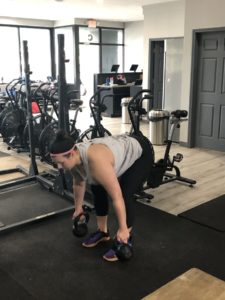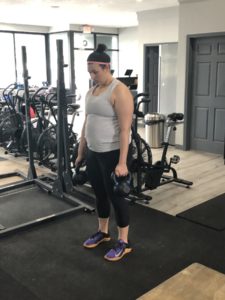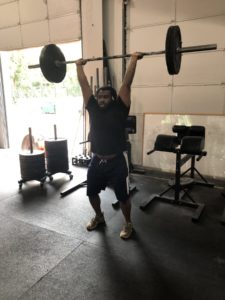
Each month Overland Park CrossFit recognizes a member who exemplifies our values and motivates others in the gym to push themselves with encouraging words. August’s Athlete of the Month is Tony Clodfelter. Tony was chosen because of the extra time and effort he puts into working on his weaknesses, his willingness to patiently let his body heal from an injury, his desire to learn and improve his technique on the snatch and clean and jerk, and his overall positive attitude that he carries with him to the gym! His hard work is paying off and we love having Tony as a part of our OPCF community! Learn more about Tony below.
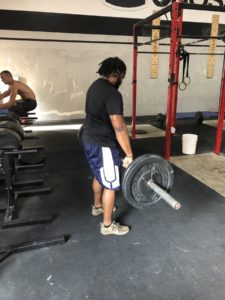
How long have you been working out at Overland Park CrossFit? 3 years
What were your thoughts after your first CrossFit workout? This is more challenging than I thought and I will be back. Do you remember what it was? Sadly, I don’t.
What has been your favorite workout so far? Anything with an Assault bike
What is your favorite cheat meal? Minsky’s Pizza
What did you want to be when you grew up and where do you work now? I wanted to work with computers and now I work at Cerner working on computer software.
What do you like to do outside of work? If I’m not at the gym, then I’m walking my dog or going fishing.
What advice would you give a newbie just starting at OPCF? Take your time to enjoy the experience and as you put in the time on the movements, they will get better.
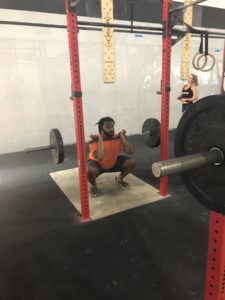
What is your favorite/least favorite movement? Favorite movement is the Assault bike; least favorite movement is the burpee.
What’s one Crossfit goal you have set for yourself to accomplish this next year? Get my T2B to be more efficient.
What changes have you seen in yourself since starting at OPCF? Just being overall happy in all walks of life.
What is your biggest improvement or proudest accomplishment thus far? Biggest improvement would be my consistency coming to gym.
How do you fit working out into your weekly schedule? I look over my weekly schedule and see what time works best for me (usually 4:30 or 5:30 after work).
What is something you have always wanted to do but haven’t yet? Sky diving

